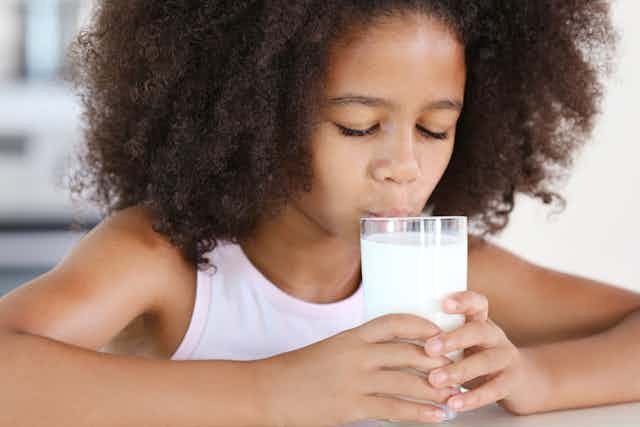A lot of people will have already made up their mind about whether humans need dairy in their diet and will be thinking that the answer is obviously “yes” or obviously “no”. But nutrition is based on science not opinion – so, here’s the latest research on the matter.
Milk is an interesting foodstuff. The sugar in it is called lactose and lactose requires a chemical or enzyme called lactase to allow it to pass across the walls of the gut into the blood stream. When we are babies, we all produce plenty of the lactase enzyme which allows us to absorb our mother’s milk. In populations where milk consumption has been historically low, such as Japan and China, most children will have stopped producing lactase soon after weaning and – producing almost entire populations that may be unable to absorb the lactose in milk – this we call “lactose intolerance”.
In populations where milk consumption has always been high, such as in Europe, most adults continue to produce lactase for their whole lives and can digest milk quite happily with only around 5% of the population being lactose intolerant.
Continuing to produce lactase into adulthood is actually an inherited genetic variation which has become so common because being able to tolerate milk has a selective advantage. Milk is a useful source of protein, energy, calcium, phosphate, B vitamins and iodine, meaning that those with the mutation were generally healthier and produced more children than those who couldn’t tolerate milk, and so the presence of the mutation increased.
The symptoms of lactose intolerance include wind, bloating and diarrhoea so if you don’t experience any of those after drinking milk or eating ice cream then you’re fine.
Fermenting

There is good evidence that milk has been part of the human diet in Northern Europe for more than 8,000 years which is when people there first moved from being nomadic to having a more structured way of life. Because 8,000 years ago most people didn’t tolerate milk well, they quickly realised that if the milk was fermented and became cheese or yogurt it could be better tolerated. This is because these processes encourage bacteria to use up most of the carbohydrate - the lactose - in the milk so people who didn’t produce the lactase enzyme could still benefit from the nutrients in the milk. Today people with lactose intolerance can drink kefir, a fermented milk drink made with a yeast starter, which some suggest also has probiotic benefits for the gut as well as many other health benefits.
So dairy has been pivotal to nutrition and important to the survival of many populations in the world and most Europeans and North Americans are well adapted to digest it. So if you have been told that humans aren’t adapted to have dairy in their diet, that isn’t correct. Similarly, it isn’t true to say that dairy promotes inflammation or acidity.
Calcium
Nutritional scientists and dietitians have often assumed that because milk is rich in calcium, it is therefore good for maintaining the calcium levels in our bones. However, a couple of recent big studies have brought this into question. A further systematic review of the evidence concluded that actually, it doesn’t seem to matter how much calcium you get from your diet, your risk of fracturing your bones remains the same.
That said, we have seen that in cultures, where dairy plays a very minimal part in the traditional diet such as in China and Japan, the incidence of hip fracture – a common outcome of poor bone mineral density – is 150% higher than that of white American or European populations.
One thing to remember about these studies is that they are looking at calcium intake in adulthood. However, we know that the strength of our bones is actually determined by our diet as children and teenagers. When we look at studies of children who have an allergy to cow’s milk, for example, we see that the strength of their bones is significantly compromised by the lack of milk in their diet and that desensitisation through treatment so their diet can include milk also strengthens their bones.
Interestingly, children with this allergy who are given alternative sources of calcium other than milk still find the strength of their bones compromised. This suggests that calcium-containing alternatives to dairy are still not good enough at promoting bone density in children.
While milk intake is really important for the healthy development of children’s bones, consuming milk as an adult doesn’t appear to decrease your risk of fractures. But there are lots of other nutrients in milk and dairy foods.
Studies have found that if dairy is replaced in the diet by foods containing the same amount of calcium such as green leafy vegetables or soya milk fortified with calcium, the diet contains less protein, potassium, magnesium, phosphorus, riboflavin, vitamins A and B12. Milk and dairy foods are also a great source of all essential amino acids which are the small protein molecules that build muscles and repair tissue damage. Obviously the protein and micronutrients could be found from other sources but obviously not without careful planning.
When it comes to health, the bottom line is we probably don’t need dairy in our diets – as adults – but milk and dairy foods are convenient and good value and provide lots of essential nutrients which are trickier to source from other foods. Where milk drinking is the cultural norm we have adapted to tolerate it very well and it can be very nutritious.


